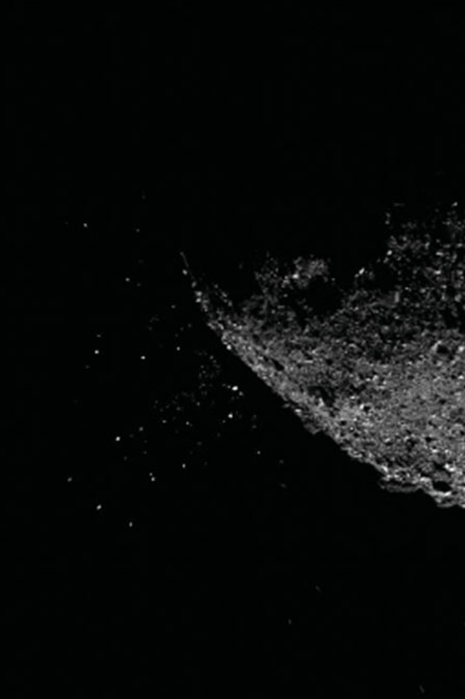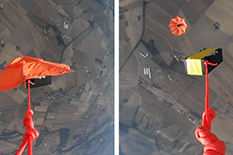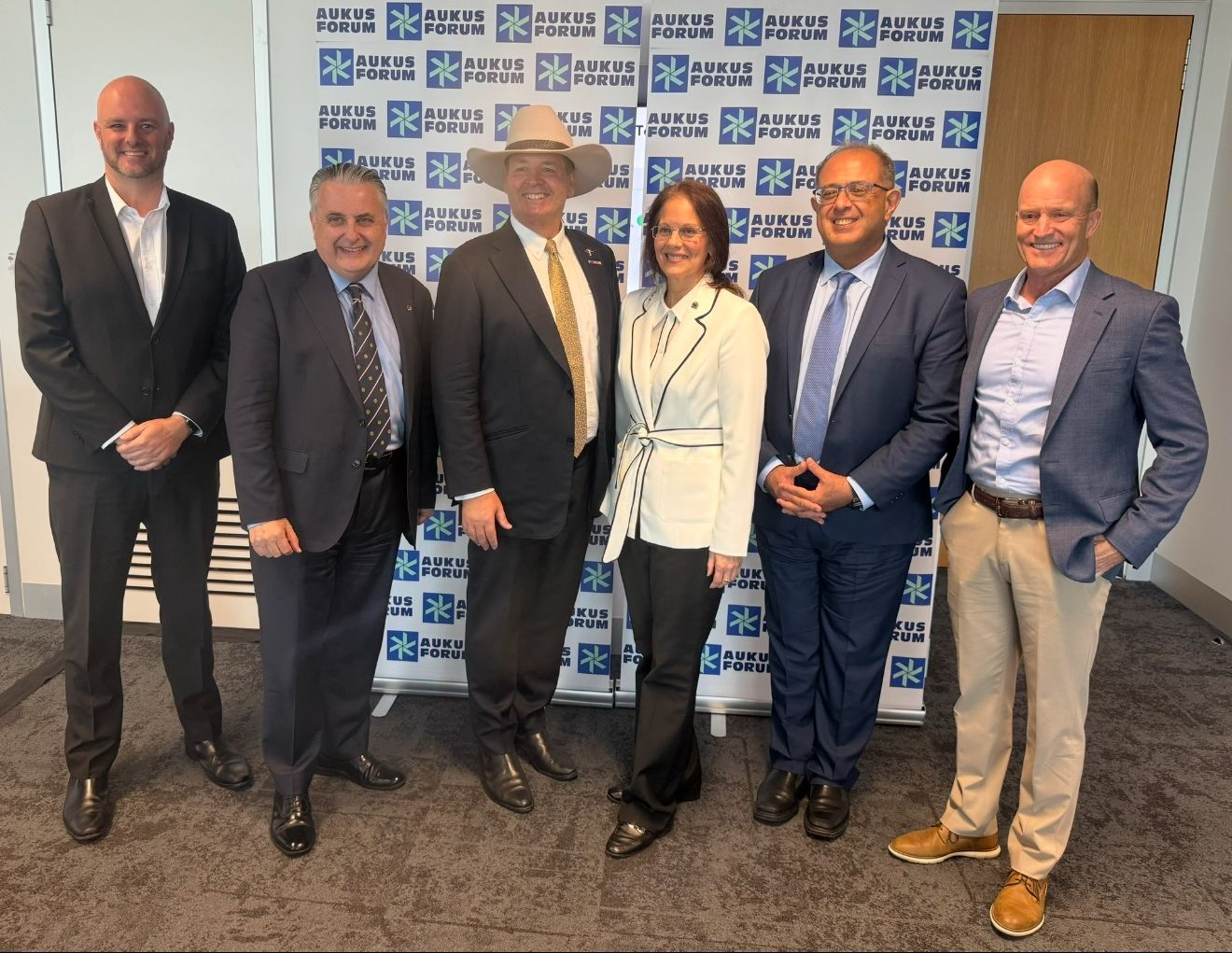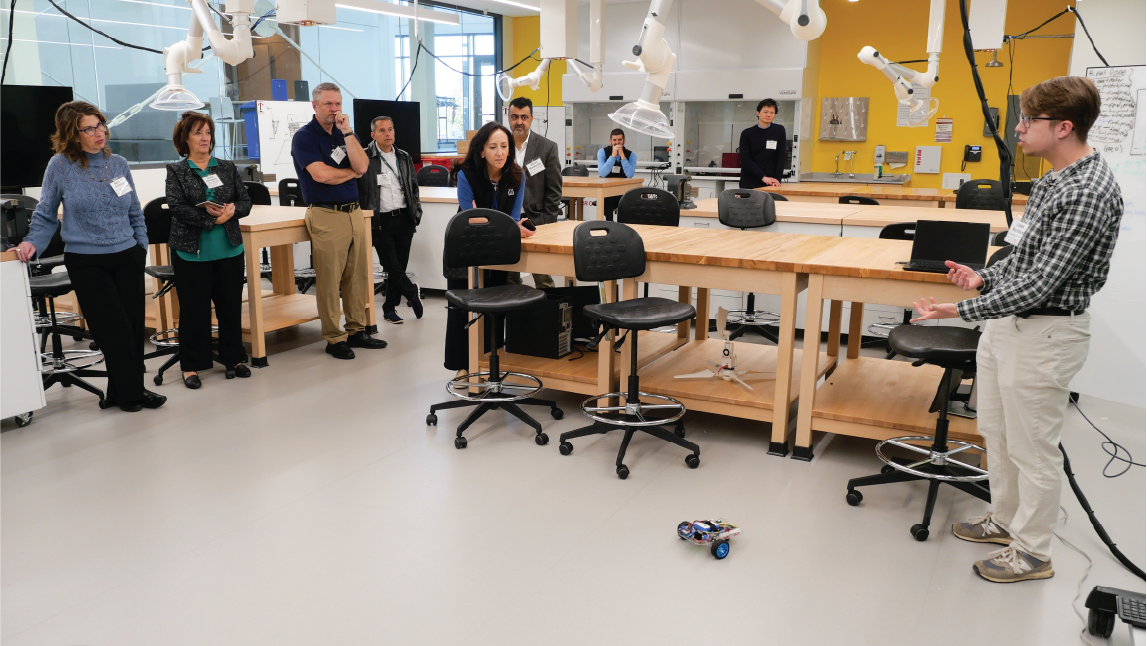News Story
Dust in Space
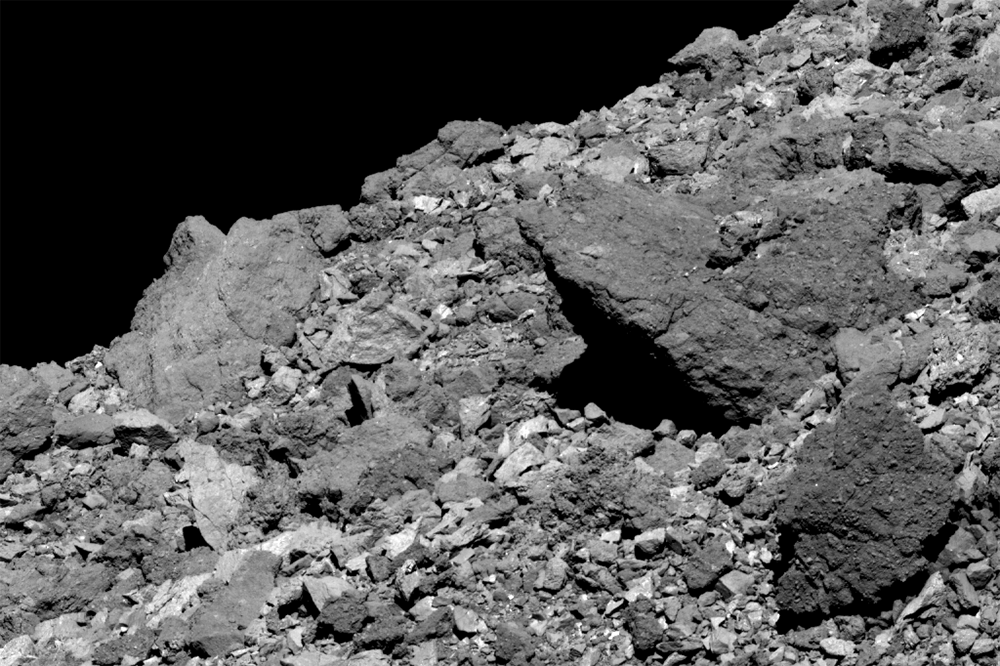
This image shows a boulder jutting out from asteroid Bennu’s northern hemisphere. It was taken by the PolyCam camera on NASA’s OSIRIS-REx spacecraft on April 5, 2019, from a distance of 1.7 miles (2.8 km). Credit: NASA/Goddard/University of Arizona
On Earth, no natural phenomenon is quite as dependable as gravity. Even a child playing on a beach knows that the sand she is excavating will just sit there in her trowel, pulled downward by this powerful force.
But on small, low-gravity celestial bodies like asteroids, the rules of gravity that we know so well no longer apply—at least, not in the ways that we’re used to. And that’s a problem for the scientists who collect samples of regolith, the dusty or pebbly material found on the surfaces of these bodies.
Asteroids are remnants of the early solar system: essentially chunks of material that did not become planets. Regolith samples from asteroids and other small celestial bodies are critical for researchers to better understand how the solar system began, and how it has evolved since.
“Gravity is so weak on the surface of these bodies that our intuition fails,” says Christine Hartzell, an assistant professor of aerospace engineering at the University of Maryland’s A. James Clark School of Engineering. “And there’s a large degree of uncertainty in which other forces are important, and how strong they are.”
In the absence of strong gravitational influences, even electrostatic forces that would be considered weak to negligible on Earth may hold outsized importance in space. Hartzell, a participating scientist on the OSIRIS-REx mission currently orbiting the asteroid Bennu, studies these electrostatic forces. A better understanding of electrostatic forces on particles improves understanding of the natural evolution of asteroids and helps inform the design of sampling methods and instruments on future asteroid exploration missions.
Electrostatic forces occur when oppositely charged particles interact with each other. This causes regolith particles to behave curiously in three ways.
First, they cause dusty particles that rub against each other to stick together, or clump. Second, dust exposed to the flow of charged particles from solar wind plasma can detach, or loft away from the surface, drawn to opposite charges in the solar wind flowing past. Third, particles can levitate after being kicked up by a small meteorite impact or blasted by a visiting spacecraft, because the electrostatic forces on those particles cancel out any gravitational pull.
And it’s possible that it’s not just tiny dust particles that may behave unusually—but larger grains, due to the extremely weak effects of gravity on asteroids, as well.
The catch, however, is that none of these behaviors have been directly observed in space, nor the forces causing them to occur measured there. Though Hartzell’s work has demonstrated these forces in laboratory experiments, many questions remain about what they look like on an asteroid, to what degree electrostatic forces affect dust behavior, how strong those forces are, and how the presence of a spacecraft in close proximity to an asteroid’s surface might change the environment.
Whether or not lofting occurs depends on the strength of the forces causing particles to stick together and, by extension, to other objects, such as spacecraft surfaces and optics. Hartzell is developing an experimental method to measure this cohesion.
How the method will work: an electrically charged plate is placed at a set distance above a surface with dusty particles, in an area of known gravity. By controlling the height and electrical charge of the plate, the electrostatic forces on the dust grains can be controlled. A camera is used to observe the size of dust grains and when they begin to be drawn to the plate. By controlling the electrostatic force and knowing the gravity, the unknown, cohesive force can be mathematically derived.
Hartzell’s method could potentially be used for actual sampling, as well. She suggests that charged plates could be used to attract dust samples, then drop them into sample collectors or directly onto analysis instruments by removing the plate’s charge.
More likely, however, is that the method might be employed to better characterize the surface of a site intended for longer-term use by, for example, an asteroid mining mission. Early planning stages would involve understanding the chemistry and behavior of any dusty surface, including how its cohesive properties may affect the function of tools like drill bits.
Harnessing electrostatic forces to control dusty particles might also mean cleaner, better functioning solar panels on Mars. An electrostatic dust shield could use coils embedded in solar arrays to “bounce” dust grains off the surface via alternating electrical charges.
But for now, Hartzell’s work involves a lot of creative lab experimentation and lab-based modeling, but with one goal in mind.
“We want to keep the spacecraft safe during operations,” she says.
Published October 14, 2019
